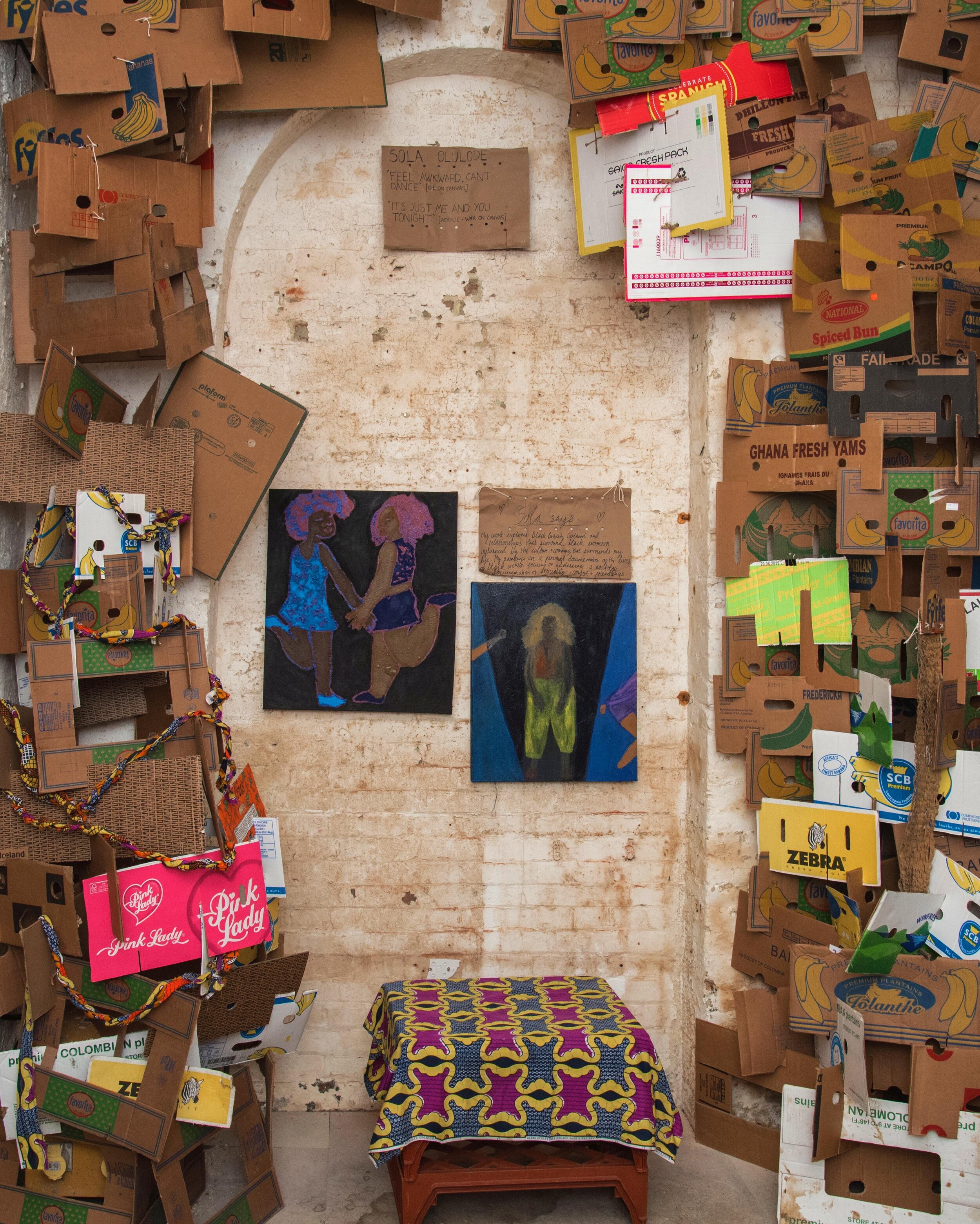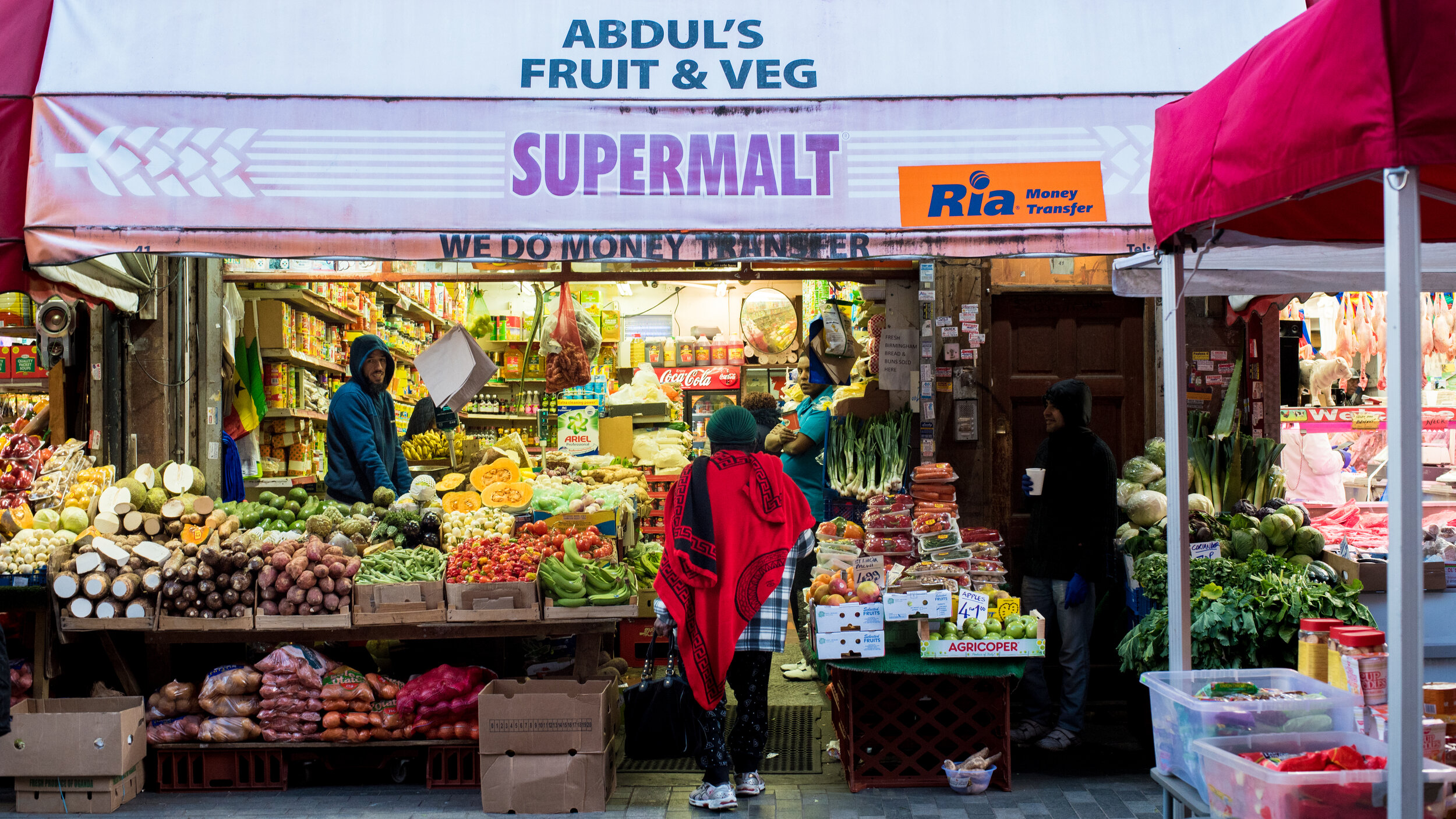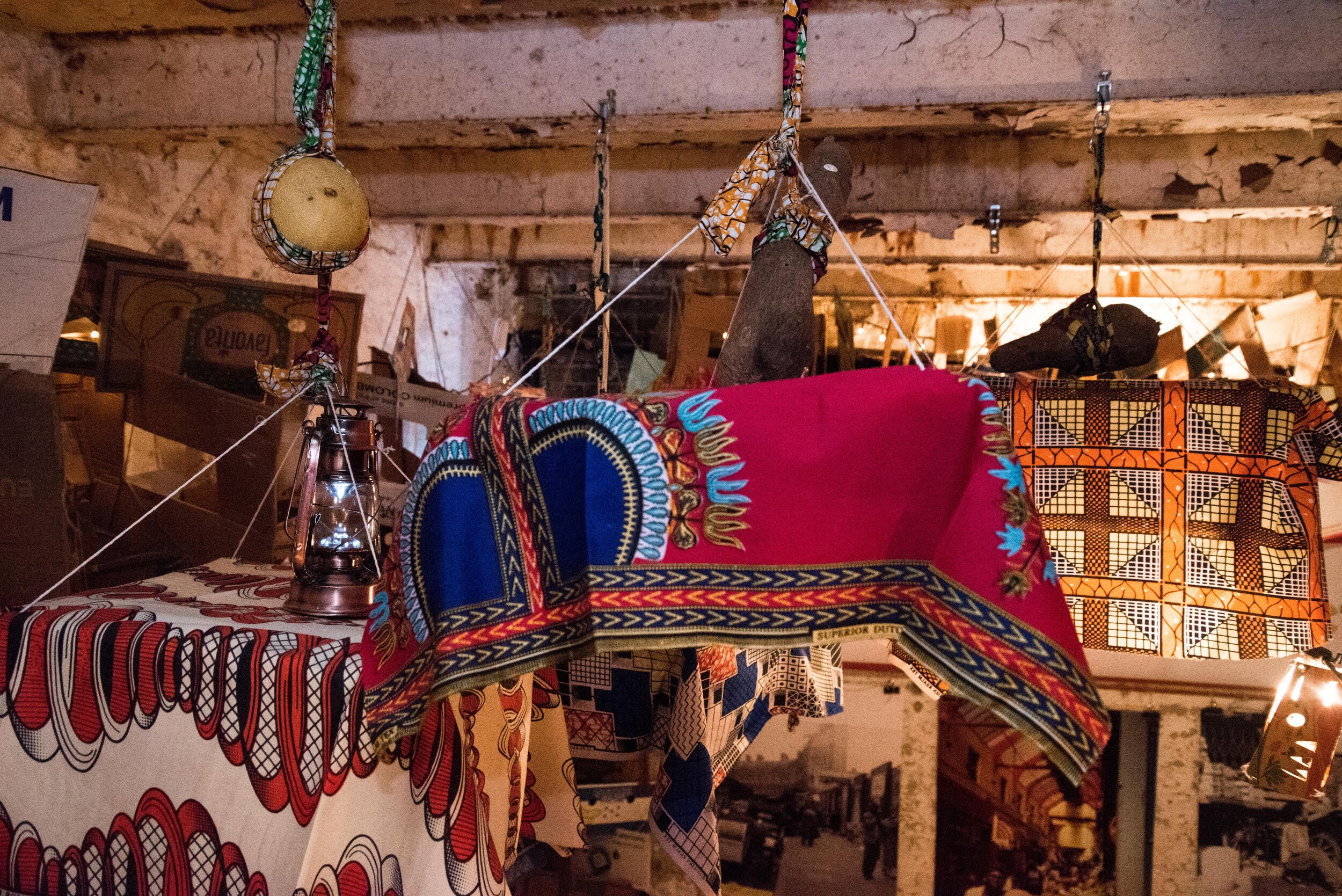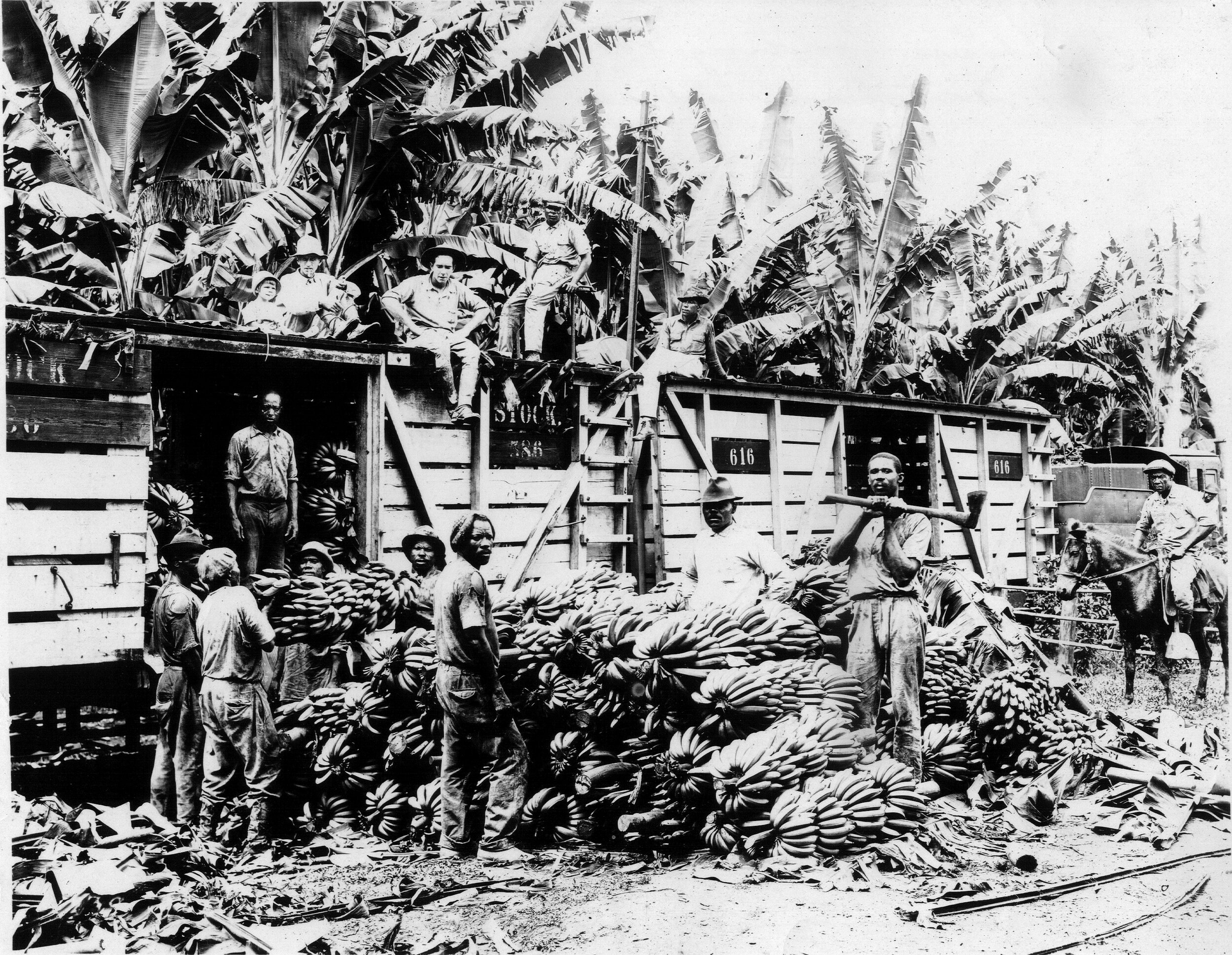Permanent Infrastructures, Precarious Spaces is a research project conducted between 2018 and 2020. It began in response to our Brixton Passageway installation, seeking to interrogate the relationship between the precarity of Afro-Caribbean diasporic culture and commerce within London and the permanence of the various infrastructures that gave rise spaces we perform and inhabit.
Various outputs from this research have been published, including in AFTERPARTI’s inaugural issue and the Architectural Review Issue 1461: Periphery. The project’s research outputs have also been presented at a number of conferences and talks such as the ‘Infrastructural Reading: Fragments, Flows, Forms’ conference supported by City University London and the Open University, the 204 Design Collective’s ‘Decolonizing Architecture’ series for the London Festival of Architecture 2018, Theatrum Mundi’s symposium ‘How Does the City Move You? On bodies, identity, and urban design’, Rosa-Johan Uddoh’s ‘Widening the Gaze: A Conference Exploring the Role of Race in Creative Practice Today’ with the Slade School of Fine Art, UCL, and ‘Public Spaces, Diverse Places: identity and race and the public realm’, part of The London Society’s Public Spaces Programme 2020 curated by We Made That. Read the transcript-essay below and for those interested in the source material but without academic access please email akil@resolvecollective.com:
Introduction [0:00]:
Looking at the varying scales of spatial organisation that underpin human movement, specifically those of the Caribbean diaspora within the Caribbean in the 20th century and in Brixton today, our design research with RESOLVE illumines a preconception of Caribbean diasporic identity, suggesting that rather than a fixed position this identity is largely defined by flows of labour, commerce, and cultural capital. As such, mobility and syncretism are key tenets of Caribbean diasporic identity, though this is often concurrent with a socio-spatial asymmetry whereby spaces that are central to diaspora are starkly less resilient than the social and physical infrastructures that precipitate them. We’ve explored this distinct imbalance here through the present case of market infrastructures in Brixton and agricultural and transport infrastructures in the Banana Republics of the Caribbean and Latin America in the early 20th century.
Through this research our fundamental conjecture, or perhaps question, is this: is it possible to – by reading the material histories and the architectures of these imbalanced spaces –formulate progressive urban design practices that address them? [/]
Boxes in Brixton [1:50]:
[/] As a symbol, Brixton Market’s importance is perhaps attested to best by its historic relationship with the Caribbean diaspora in London. [/] However, the market, as with a number of urban markets cum diasporic spaces in London is today faced with intractable change as the effects of gentrification and rapacious land speculation threaten its future as a significant Caribbean space. [/] [/] As such, our project ‘Passageway’ was conceived of as a temporary space where questions posed of the social, historic, political, cultural, and environmental value of urban markets in our increasingly valorised cities were not only part of the project’s core programmatic ambitions but it’s spatial skein .[/] Within a derelict space in Brixton Market we repurposed hundreds of banana boxes from the market, transforming an essential market infrastructure [/] to an internal structure [/] that would provide an armature for [/] conversations, [/] performances, [/] exhibitions, [/] food events, and [/] workshops in the space.
As an internal structure we wanted to reflect the tactility of these banana boxes in their original setting. [/] They were in many ways the currency of space in Brixton Market; rarely ever containing bananas and instead becoming tables, chairs and display plinths by day, and storage cupboards, shelters, and bins by nights, exhibiting a resilience that put them in distinct contrast with the volatile circumstances of some of the businesses and vendors (Evans, 2018). Curiously, printed on the boxes were always the names of a select few countries. ‘Colombia’, ‘Honduras’, ‘Costa Rica’, and ‘Ecuador’ made frequent appearances, with the occasional ‘Guatemala’ and ‘Nicaragua’, but very rarely the Trinidads, Jamaicas, and Barbados’ that populate our collective imagination of the archetypal West Indies. Moreover, the companies that produced these boxes were almost exclusively four names: Chiquita, Dole, Fyffes, and Del Monte. In the months after ‘Passageway’ had decanted, the question still lingered in our minds: why was the archetypal space of Caribbean identity in London constructed from Latin American banana boxes? [/]
Archival Photo of West Indian Banana Workers on Sixoala Plantation (Photo Courtesy of Philippe Bourgois)
Plantations in Limon [3:40]:
The answer took us to the early 20th century Caribbean, where the intra-regional movement of labour, commerce, and cultural capital was forging a Caribbean identity at the geographical and political margins of the region. [/] During this period, the global banana trade was controlled by the United Fruit Company (UFCO), a large American corporation whose stranglehold on the Caribbean and Latin America is often argued as having been a form American crypto-colonialism in the region (Economist, 1997; see Herzfeld 2002).
[/] From facilitating coup d’etats and prompting a civil war in Guatemala, to massacres in Colombia and the ability to pay off countries’ national debts with single loans, the UFCO aptly became known as ‘El Pulpo’; a monster with its tentacles gripping the breadths of the Caribbean basin. The 1950 poem, The United Fruit Company, by Pablo Neruda, also gives us an insight into this world. It reads [/]:
The company’s almost folkloric reputation also reaches a height of literary representation in the work of Gabriel García Márquez’s, where in “One Hundred Years of Solitude,” a ruthless corporation named ‘The Banana Company’ arrives to the fictional town of Macondo and brings with it infrastructural modernity and doom. “Look at the mess we’ve got ourselves into”, exclaims one Macondo resident, “just because we invited a gringo to eat some bananas.”
UFCO set parameters that reshaped entirely novel geographies of labour and capital in the Caribbean and Latin America, controlling agricultural production through the coercion of political leaders and military factions, but also through the construction vast amounts of infrastructure [/] and ownership over the territories it dissected. This infrastructural yoke not only transformed the Caribbean coastal regions of Latin America into tributary states [/] of a voracious American food industry (see Correal 2017; Chapman 2007) but also guided and facilitated the movement of an entire generation of black British West Indians who had left home to labour in where became known as the Banana Republics: Colombia, Honduras, Costa Rica, Ecuador, Panama, Nicaragua, and Guatemala.
[/] Contrasting poetically with the permanence and fixity of colonial infrastructure in the Banana Republics, was the ephemerality and mobility of black British West Indians, engendered by their relative youth and the stagnant post-emancipation economies of their homelands (Chomsky 1995). [/] As a guaranteed supply of young, resilient workhands, with no apparent desire to naturalise and sovereign rights that were largely abandoned by the British Crown (see Bourgois 1989) these labourers made up an essentially dependable yet expendable workforce. [/] Life in this way was often insufferable. [/] They were subject to numerous racist campaigns, economic repressions and even deportation (Chambers 2010). [/] Their physical conditions were often deplorable: space, evident in the banana box now and the banana enclave then, was designed for infrastructural resilience and human precarity. [/] “A banana plantation”, one contemporary commentator writes, “is a poor place to live unless you’re a banana” (Bourgois 1989: 3).
United Fruit Company Shipping & Cruise Routes, est. 1920-30 (Source: https://canalzone.wordpress.com/)
[/] However, their movement formed the basis for a syncretic Caribbean identity that reflected not the confines of an island’s shore but the vast expanse of an ocean and its moving currents. During this period, despite the perceived (or indeed, desired) Afro-Caribbean ephemerality, familial and social networks were spread across the Caribbean and the Latin American coast (Putnam 2002), [/] dialects and aesthetics converged (Boyd 2013), and places became intrinsically connected through song, poetry, language and spiritualism (Chomsky 1995).
[/] Consequently, Latin American cities such as Colon, Limon, Puerto Cortés, and Bluefield are still shaped today by their remarkably Afro-Caribbean identity. [/] Similarly, through what might be understood as the region’s lyric networks – the songs and poems that connected the islands’ populations to its intra-regional diaspora – generations of children in the former British West Indies will have grown up with a sense of the Hispanic reaches of the Caribbean as a recurrent cultural motif through folksongs and poems such as ‘Colon Man’ and the story of Solomon’s Grandpa (Cooke 2016).[/][/] Perhaps one of the most endearing, and enduring, connections is inherent in the calypso lament ‘Matilda’, recorded by the artist King Radio in the 1930’s and popularised by Harry Belafonte in 1953. The lyrics disclose a familiar leitmotif at the time of intimate relationships that have been stretched by the regional connections between the islands and the basin’s littoral regions, here telling of an imaginary woman who takes her lover’s money and runs away to Venezuela [‘Harry Belafonte - Matilda’ from 0:21]. Beyond the lyric association, the composition itself archives this period of proximity, intense movement and identity formation, with the song becoming so popular in Jamaica it became the melody for the ‘Happy Birthday’ song [‘Birthday song’ from 0:20].
Thus, as both a means and a destination, the infrastructures of social and physical mobility in the region - the railway lines, shipping networks, and the banana plantations themselves – became sites from which black West Indian migration transposed geographic bounds of the Caribbean with oceanographic ones. Both in light of and despite the extreme hardships the itinerant Afro-Caribbean population faced, the wider Caribbean became a web of superimposed, syncretic cultures that black West Indian identity shaped and was itself shaped by. Importantly, this period also concretised a culture of mobility that would manifest once more in future, larger migrations such as the Windrush generation to Britain, and generational movement to the United States and Canada.
[/] Infrastructural Resilience, Spatial Precarity [10:00]
[/] Folded into the parametrics of diasporic space in the early 20th century Caribbean were colonial governance structures that necessitated asymmetries of wealth and ownership, and of precarity and permeance. Demonstrably, these imbalances, which left black Caribbean labourers bereft of political rights and visible permanence in the Banana Republics, are not estranged from the asymmetries that threaten Brixton Market’s continued centrality to the Caribbean diaspora of London and both can be read, albeit on different scales, through the construction of space. Today the Banana Republics are still the world’s leading banana exporters and though UFCO no longer exists, its successor, Chiquita, alongside the other common names on the banana boxes in Brixton, have filled the space it left, controlling 65% of the global banana trade. As an invaluable mechanism of a $8.9 billion industry that surreptitiously populates precarious spaces of pronounced cultural significance, these companies’ boxes in Brixton Market disclose an asymmetry where diasporic identity inauspiciously rests, sometimes quite literally, on unwavering commercial infrastructures in urban spaces. And this rings as true for the containers that construct urban markets now as it does for the railways and shipping routes that constructed entire regions then. Yet, they also offer a lens through which we may understand fluidity, rather than fixity, as a leitmotif of Caribbean diasporic identity and as such, provide a conceptual and practical basis for addressing the precarity of diasporic spaces through design in cities today. In understanding this far more complex relationship between a diaspora and the spaces of significance to them, we may begin to ask at least two, more nuanced questions in our practice. How, as the effective[AS1] , might we benefit from looking at city-wide, national and international networks of resilient cultural spaces that inform and facilitate one another, rather than individual bastions of culture? And can we, as the affected, re-appropriate notions of temporariness, mobility, and malleability to conceive of spaces that cannot be threatened by challenges to their fixed spatial determination?
References:
Annie Correal, ‘The Secret Life of the Banana’ (2017)
Audley Boyd, ‘Mi Nuh Chat English – Jamaican Roots Strong in Costa Rican Town’ (2013)
British Pathé, Caribbean Market (1961)
Chomsky, Afro-Jamaican Traditions and Labor Organizing on United Fruit Company
Plantations inCosta Rica, 1910 (1995)
Elisavinda Echeverri-Gent, Forgotten Workers: British West Indians and the Early Days of the Banana Industry inCosta Rica and Honduras (1996)
Glen A. Chambers, Race, Nation, and West Indian Immigration to Honduras (2010)
Judith Evans, ‘Traders In Brixton Fall victim to London gentrification’ (2018)
King, J. ... et al., Socio-Economic Value at the Elephant and Castle (2018)
Lara Putnam, The Company They Kept: Migrants and the Politics of Gender in Caribbean Costa Rica, 1870-1960 (2002)
Mel Cooke, ‘Story of The Song: Miss Lou Pens Part of Migrant’s Tale’ (2016)
Paul Gilroy, Black Atlantic (1993)
Peter Chapman, ‘Rotten Fruit’ (2007)
Phillipe I. Bourgois, Ethnicity at Work: Divided Labour on a Central American Banana Plantation (1989)
Shubbak in Shephard’s Bush Market - http://www.shubbak.co.uk/shubbak-shepherds-bush/
Will Worley, ‘Take the Victoria Line to Colombia: Inside London’s colourful Latin market, threatened with demolition’ (2017)












